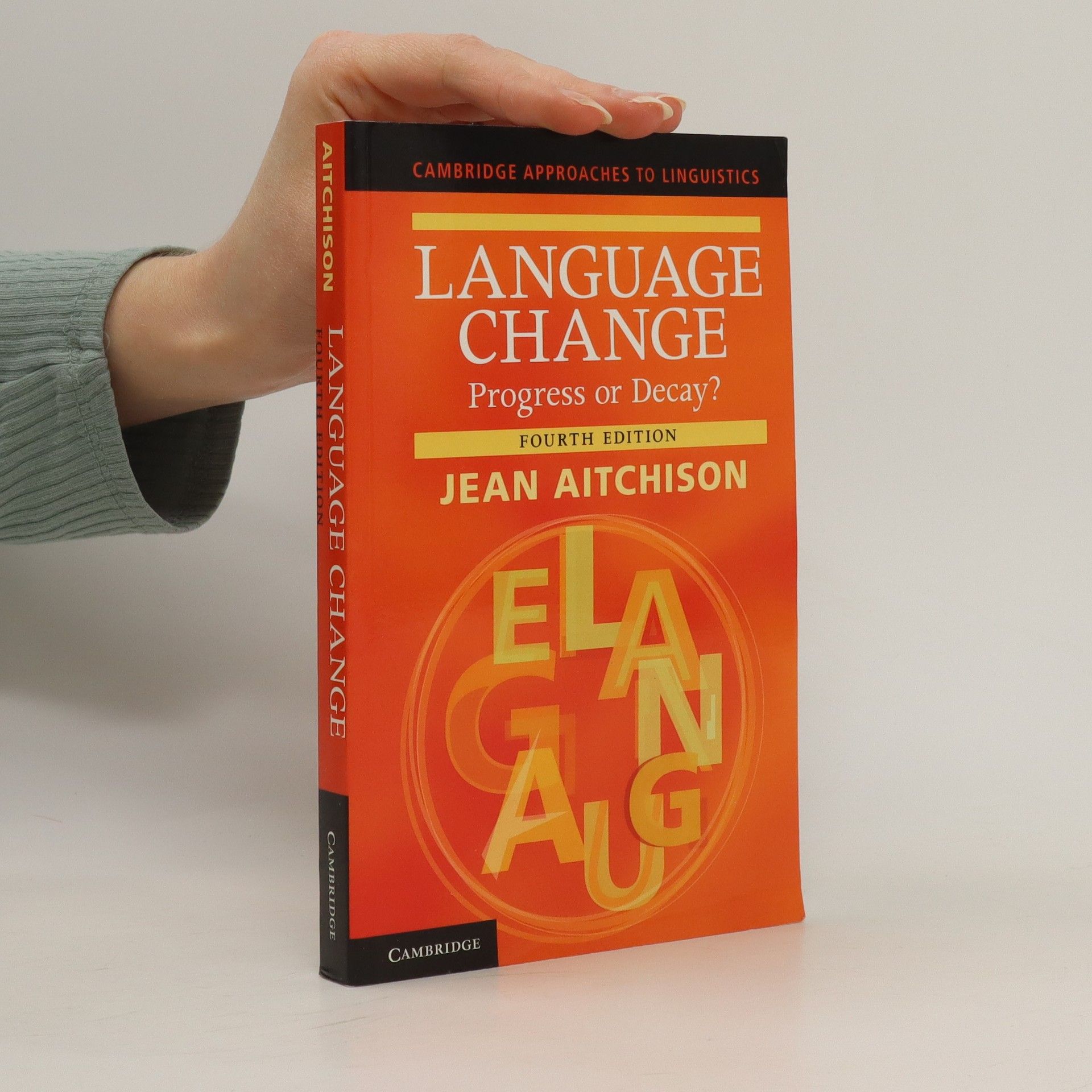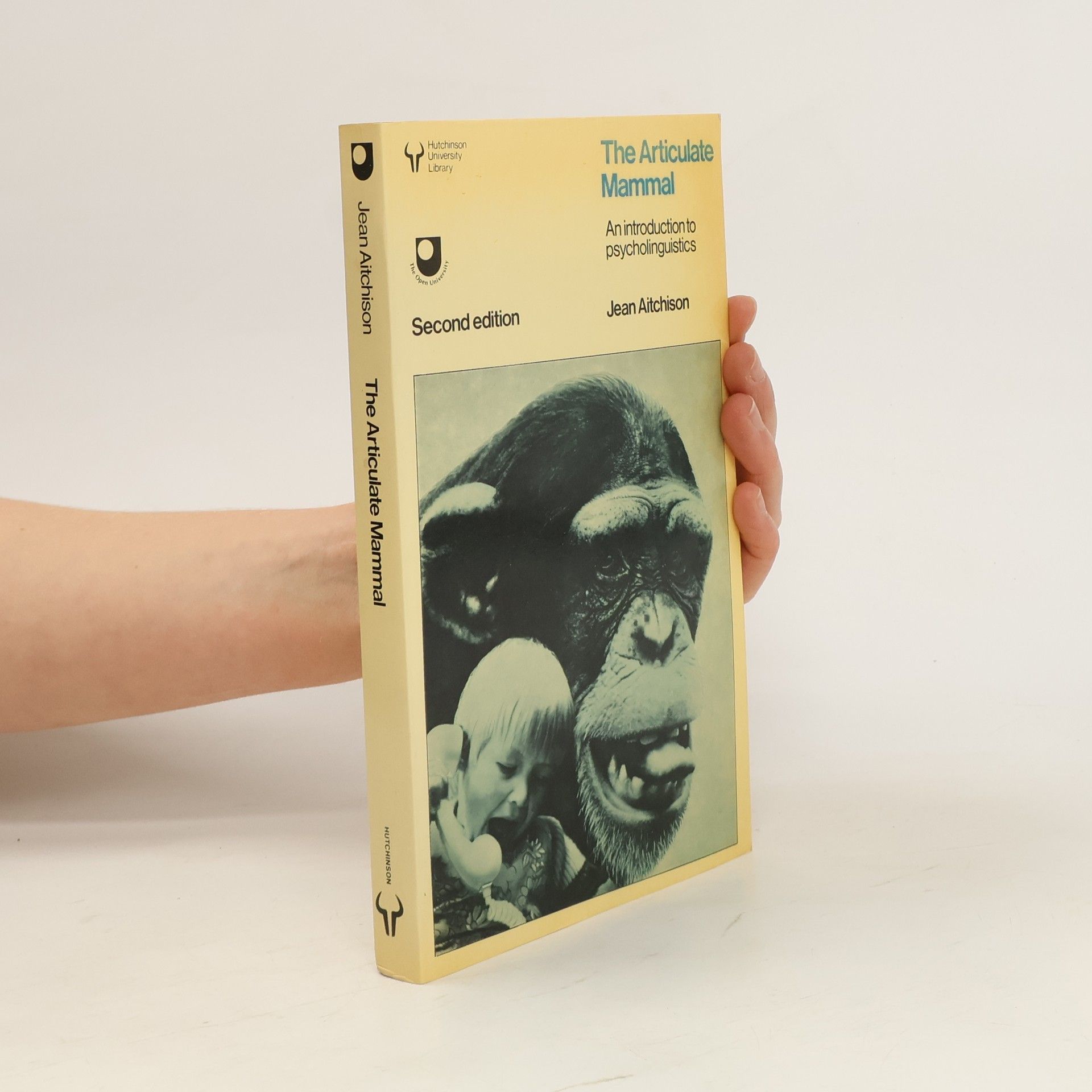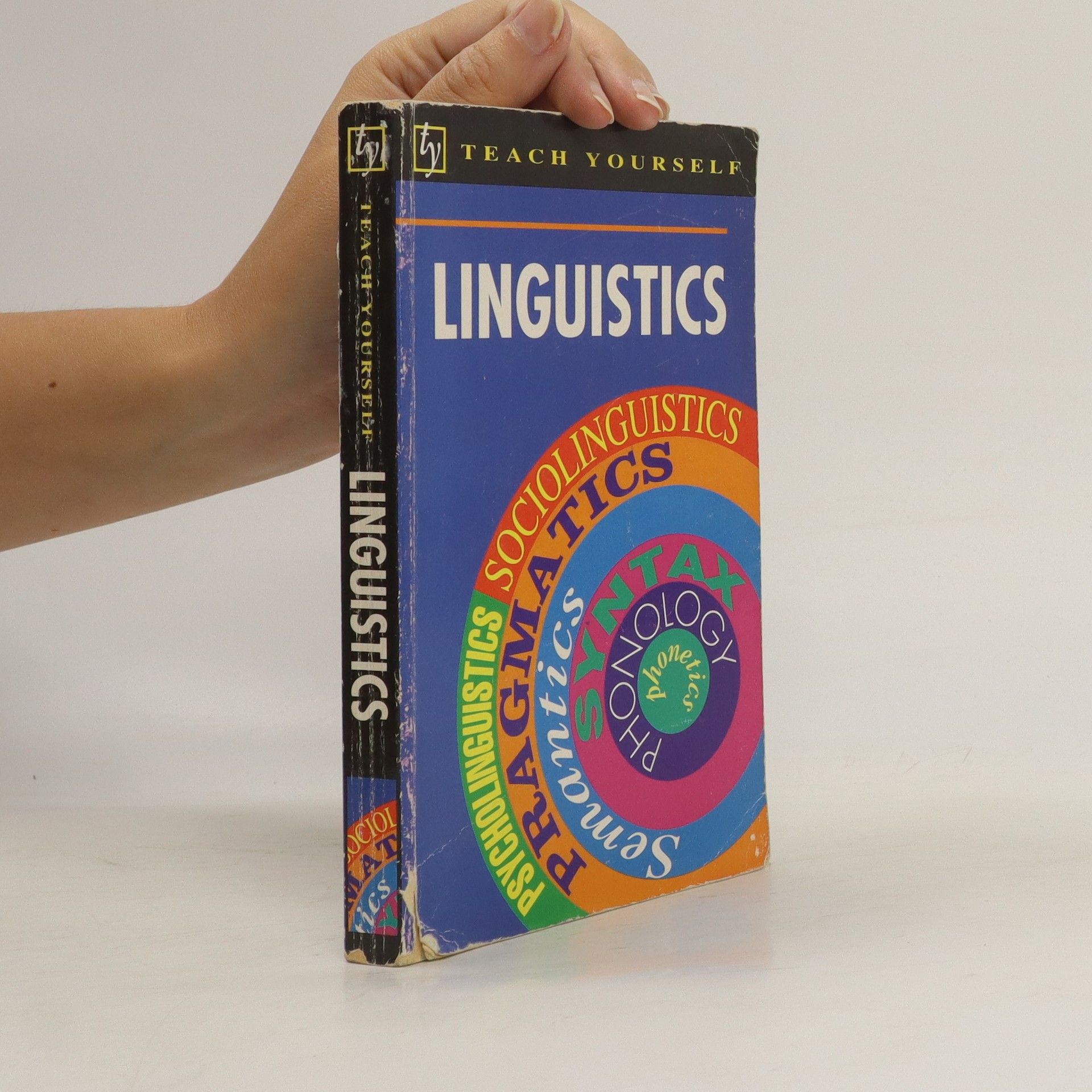This new edition of the Longman Dictionary of Contemporary English includes 80,000 words and phrases, with 3,000 of the most frequent words in written and spoken English
Jean Aitchison Livres
Jean Aitchison est professeure de langue et de communication dont les travaux explorent la linguistique socio-historique. Elle se penche sur la relation complexe entre la langue et l'esprit, examinant comment nos pensées sont façonnées par les structures linguistiques. De plus, ses recherches analysent l'impact profond du langage tel qu'il est utilisé dans les médias. Son travail éclaire l'évolution dynamique de la langue au fil du temps et son influence sur la cognition humaine et le discours sociétal.






Aitchison's Linguistics
- 306pages
- 11 heures de lecture
A comprehensive text on linguistics which includes sections on speech disorders, politeness, the language of advertising and phonetics.
Words in the Mind. An Introduction to the Mental Lexicon
- 307pages
- 11 heures de lecture
The 4th edition of "Words in the Mind" explores the latest insights into how we learn, remember, and understand words, focusing on the mental lexicon of native English speakers. It includes new chapters on brain and language, enhanced coverage of lexical corpora, and is designed to be accessible for students and non-specialists.
Language is like a vast spider's web. In this volume Jean Aitchison explores the different facets of this web, ranging from its biological nature and the way in which language is acquired by children to the way the web has aided language evolution. This is the text of the 1996 BBC Reith lectures, with illustrations, notes, and an afterword which looks at the reception of the lectures.
Requiring no prior knowledge of the subject, this text tackles basic questions central to the study of psycholinguistics, such as whether language is restricted to humans, whether there is biological evidence for innate language activity, how children learn language, and how we understand, plan and produce language. The author investigates these issues with regard to animal communication, child language and the language of adults, and provides references and suggestions for further reading.;The book has been substantially revised, in particular taking account of the considerable changes in Chomsky's recent ideas. As a result, the chapters on grammatical innateness, child language acquisition and speech comprehension have been largely rewritten.
How and why do languages change? Where does the evidence of language change come from? How do languages begin and end? This introduction to language change explores these and other questions, considering changes through time. The central theme of this book is whether language change is a symptom of progress or decay. This book will show you why it is neither, and that understanding the factors surrounding how language change occurs is essential to understanding why it happens. This updated edition remains non-technical and accessible to readers with no previous knowledge of linguistics.
Teach Yourself Linguistics
- 224pages
- 8 heures de lecture
An introduction to linguistics. This fifth edition contains a new chapter on language and style, discussing literature, advertising and newspapers. There are also new sections on language origin, the role of verbs, language and power, and sign language.
Exploring the origins and evolution of human language, this comprehensive introduction delves into its development over time. It offers insights into linguistic diversity and the factors that have shaped communication among humans. With its accessible approach, the book serves as a valuable resource for readers interested in understanding how language has evolved and its significance in human society.
Linguistics
- 272pages
- 10 heures de lecture
This book is a straightforward introduction to linguistics - the systematic study of language which attempts to answer two fundamental questions: what is language? and how does language work?. The author explains the basic concepts and essential terminology with examples drawn mainly from English. Sound patterning, syntax and meaning - the inner core of linguistics - are discussed in simple terms, as are the rapidly growing areas of pragmatics, sociolinguistics, psycholinguistics and stylistics. The book also deals with language and linguistic typology. In its final section, it outlines Chomsky's transformational grammar, including information on his Minimalist Program.
Wörter im Kopf
- 367pages
- 13 heures de lecture
Das Buch behandelt den menschlichen Wortspeicher, das „mentale Lexikon“, und damit die Frage, wie wir Wörter lernen, verstehen, produzieren, speichern und finden. Im Mittelpunkt des Originals „Words in the Mind - An Introduction to the Mental Lexicon“ (Blackwells: 2. Auflage 1994) steht die Betrachtung und Erforschung der englischen Sprache; die deutsche Fassung enthält jedoch auch zahlreiche Beispiele aus dem Deutschen. Das Buch ist einfach und verständlich geschrieben und gibt einen ausführlichen Überblick über die Forschung zum mentalen Lexikon. Es richtet sich vor allem an Studierende der Linguistik und Psychologie, doch auch an Dozenten, Pädagogen und interessierte Laien.

